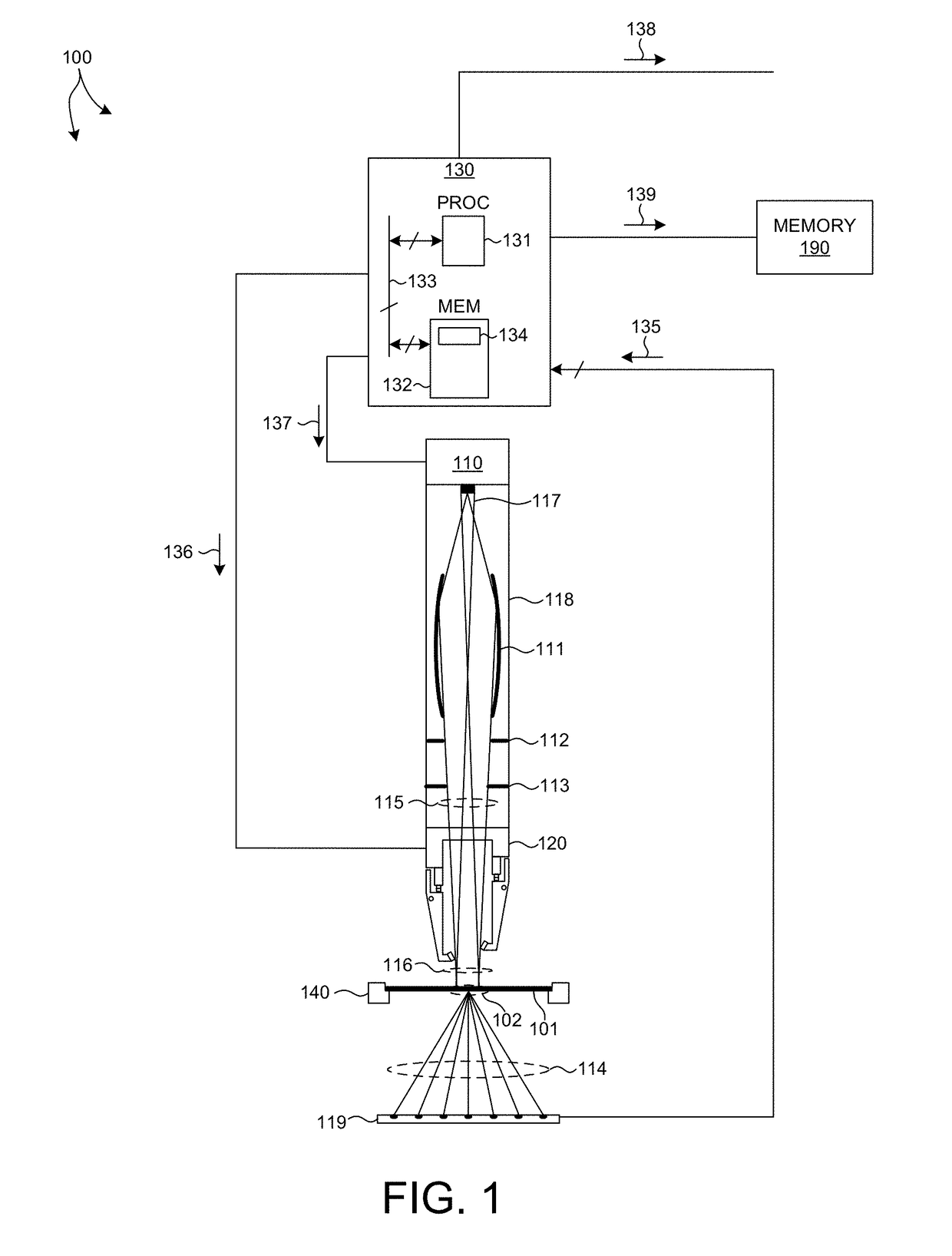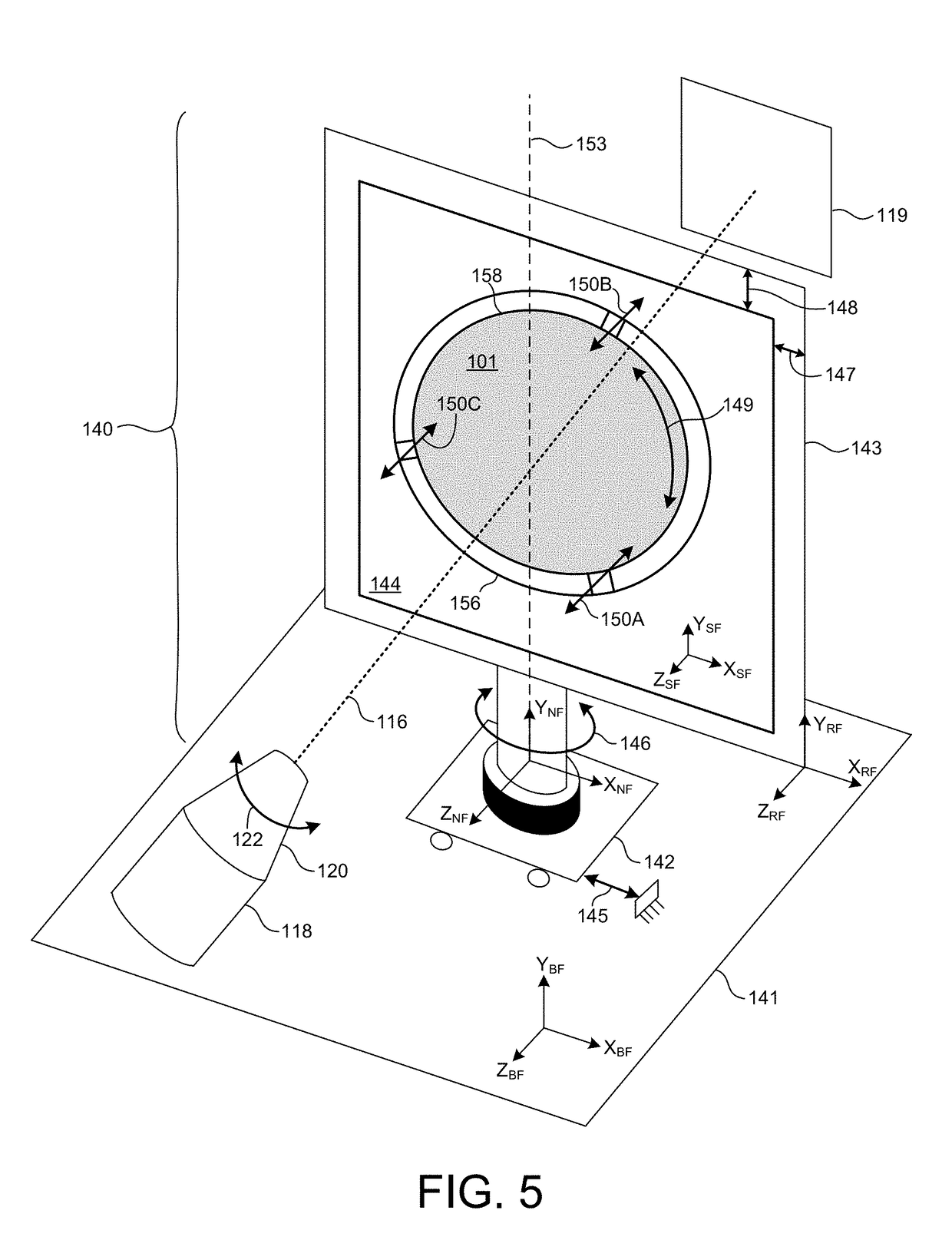On-Device Metrology Using Target Decomposition
a target decomposition and metrology technology, applied in the field of metalrology systems and methods, can solve the problems of difficult optical radiation penetration to the bottom layer, difficult characterization, and more difficult characterization, so as to reduce the area, reduce the bias, and increase the metrology correlation to yield
- Summary
- Abstract
- Description
- Claims
- Application Information
AI Technical Summary
Benefits of technology
Problems solved by technology
Method used
Image
Examples
Embodiment Construction
[0048]Reference will now be made in detail to background examples and some embodiments of the invention, examples of which are illustrated in the accompanying drawings.
[0049]Methods and systems for more efficient X-Ray scatterometry measurements of on-device structures are presented herein. On-device structures or device-like scatterometry targets are necessarily complex to avoid bias between measurements and actual device structures. Moreover, the area of a semiconductor wafer measured by a metrology system at a given instance or measurement interval may include one or more on-device structures or device-like scatterometry targets. However, X-Ray scatterometry measurements of on-device or device-like scatterometry targets are described more simply as a decomposed set of sub-structures, measurement sub-areas, or both.
[0050]FIG. 1 illustrates an embodiment of a transmission, small-angle x-ray scatterometry (T-SAXS) metrology tool 100 for measuring characteristics of a specimen in acc...
PUM
 Login to View More
Login to View More Abstract
Description
Claims
Application Information
 Login to View More
Login to View More - R&D
- Intellectual Property
- Life Sciences
- Materials
- Tech Scout
- Unparalleled Data Quality
- Higher Quality Content
- 60% Fewer Hallucinations
Browse by: Latest US Patents, China's latest patents, Technical Efficacy Thesaurus, Application Domain, Technology Topic, Popular Technical Reports.
© 2025 PatSnap. All rights reserved.Legal|Privacy policy|Modern Slavery Act Transparency Statement|Sitemap|About US| Contact US: help@patsnap.com



